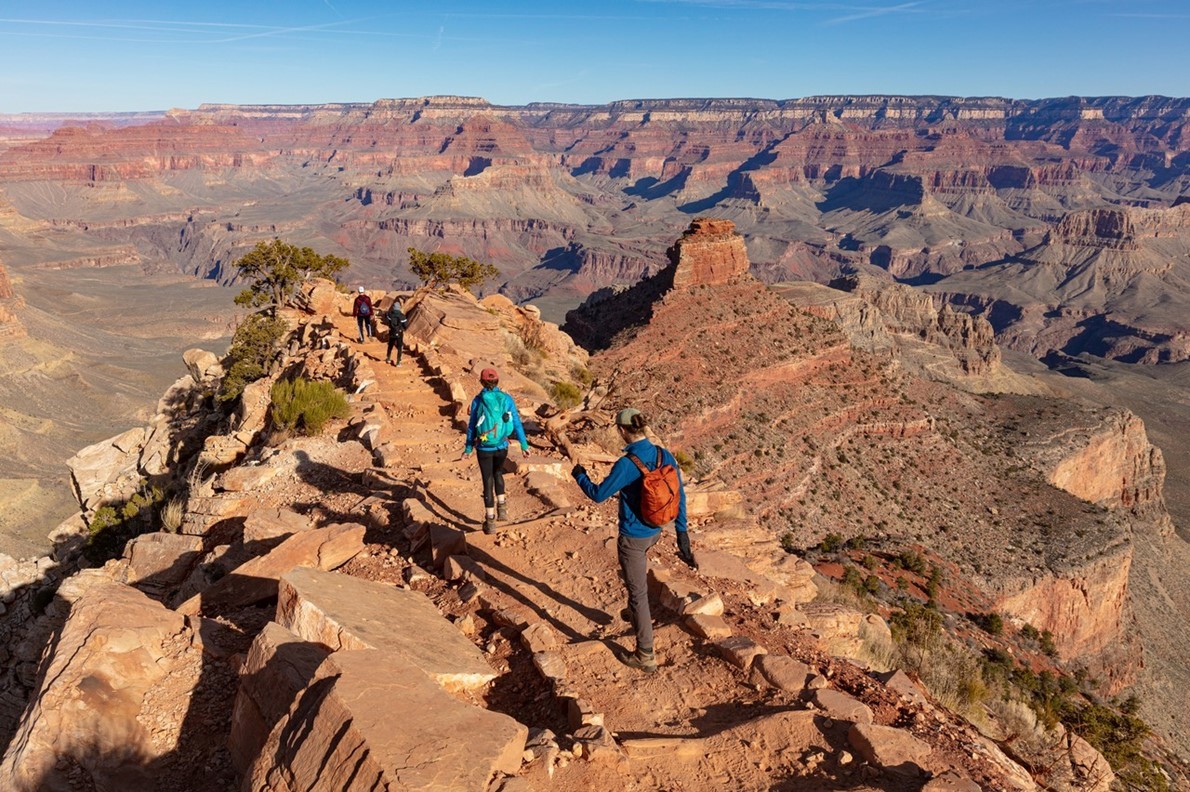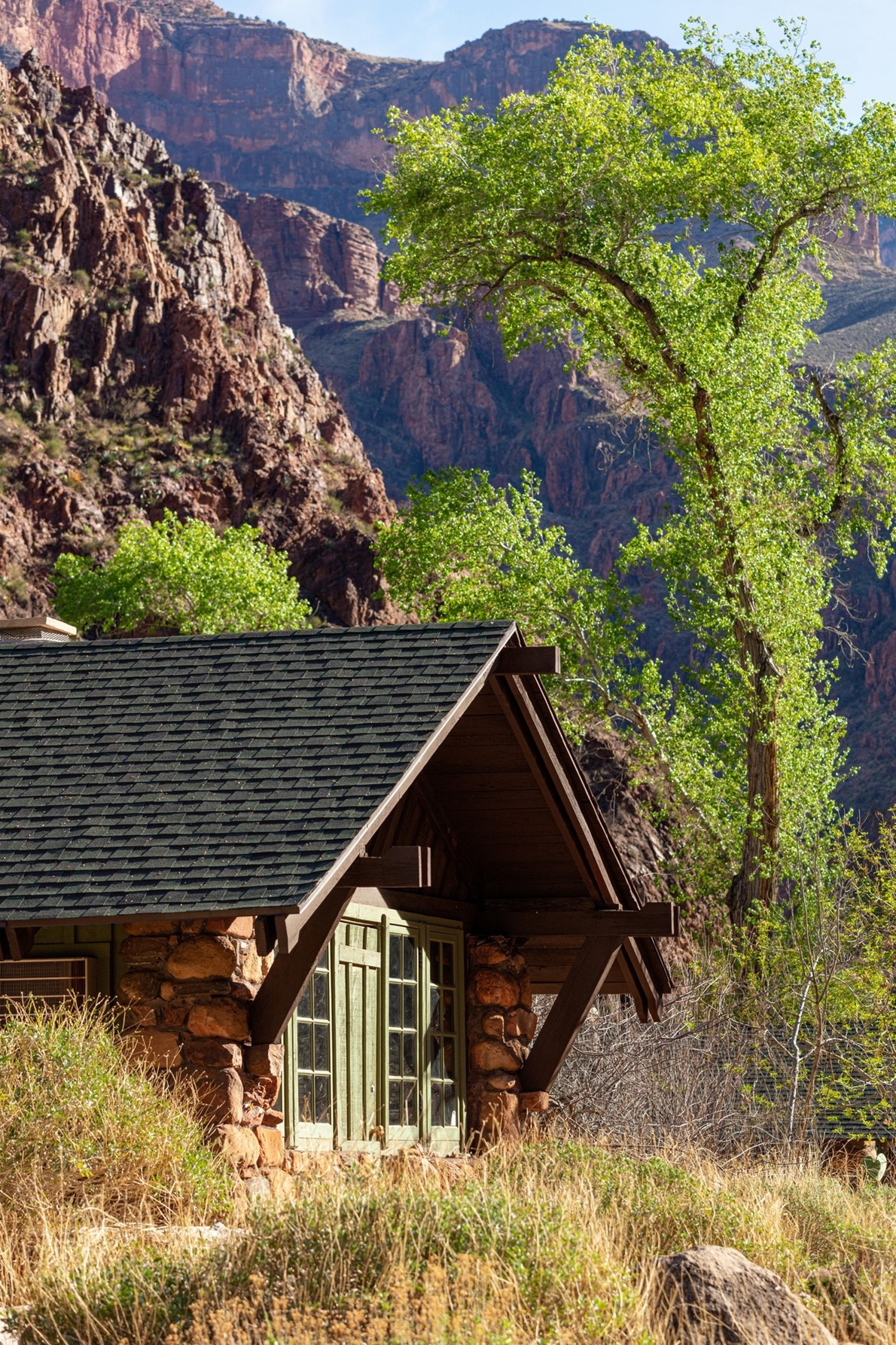When a
friend first mentioned the Grand Canyon’s Phantom Ranch, I could not believe my
ears. It’s
America’s most elusive hotel reservation, she said, the only lodging
within the canyon itself, all 446km of it. A cluster of century-old stone
cabins tucked along a stream, reachable only by mule ride or by trudging down
nearly 1.6km into the crust of the earth.
اضافة اعلان
“Rustic, amazing,
gorgeous” were some of her words. But you must plan well in advance. “They do
reservations by lottery a year out,” she warned.
I dashed home and
jumped online.
When I was lucky
enough to secure a cabin for my family for 13 months later, in November 2019, I
felt like I was throwing a pebble into an unknowable future. I was fending off
a cancer attack, living scan to scan. As I plodded through another barrage of
radiation and
chemotherapy, my doctors smiled sympathetically when I kept
saying that I had to be fit enough to get to Phantom Ranch.
My family of four
arrived at our appointed day, just after sunrise at the top of the South Kaibab
Trail, laughing at the idea that Phantom Ranch is, truly, the ultimate
destination hotel. The entire point of the place is the experience involved in
getting there.
Phantom Ranch usually sleeps around 90, in 11 private cabins and four dorms that are divided by gender.
“The Lowest Down
Ranch in the World,” wrote the Coconino Sun newspaper when the lodgings opened
in 1922. Mary Jane Colter, the pioneering architect for the Atchison, Topeka,
and Santa Fe Railway, had turned a rustic outpost where Teddy Roosevelt once
camped into an oasis for the smart set. Her cabins and dining hall (which
seconds as a general store and post office) are all built of the native stone.
Every egg and can of beer to the ranch comes down from the South Rim by mule
train.
Now owned by the
National Park Service and run by a private contractor, Phantom Ranch usually
sleeps around 90, in 11 private cabins and four dorms that are divided by
gender. But since our two-night stay, the pandemic has changed much of the
experience that my family had just weeks before the coronavirus first cropped
up in China. Under the current rules, the dorms are closed and several of the
cabins are being used by staff, reducing the number of nightly guests to 52.
Instead of the traditional family-style meals in the dining hall, campers must
now fetch breakfast and dinner from a window to eat outside or in their cabins.
 Hikers heading down the South Kaibab Trail in Grand Canyon, Arizona, on March 5, 2020.
Hikers heading down the South Kaibab Trail in Grand Canyon, Arizona, on March 5, 2020.
A far bigger
interruption is set for next year, when the park service will embark on a
long-delayed upgrade of the ranch’s wastewater treatment plant. Starting in
May, the fabled lodge will be shuttered for months — and possibly even a year —
as workers shuttle new pipes and pumps down by helicopter. So, for now, the
lottery is not taking further reservations, although cancellations do still
make cabins available from time to time. New openings are posted on the Phantom
Ranch website.
The day of our
descent, we sent our single shared duffel down by mule train and set out with
daypacks stuffed only with water and lunch. We could see the measure of our hiking
across the canyon in the bands of white, yellow, red, and gray stone, each
marking a geologic stratum of billions of days.
For most of the
morning we walked alone, the four of us, separated by a few hundred yards, as
other hikers came and went. We had so much to see and so little need to talk of
it. We each kept our own pace, with our younger daughter, Frances, then 22,
leading the way and my wife, Shailagh, picking up the rear. We would come to a
vista and pause to marvel at how far we had come, or to shake our heads in
amazement at the vast temples of stone around us.
The river’s chill and strong westward pull provided a moment of arrival like few others.
We had covered at
least 6.5km of ground and perhaps 536m in elevation before we caught our first
full glimpse of the
Colorado River, the creator of all this. We thrilled at the
sight, but also at the sound of water in a land of silence. Down the last
corkscrew trail, we entered a tunnel burrowed through the rock and crossed the
elegant, 94-year-old suspension bridge that crosses the Colorado.
Frances and her
older sister, Lilly, were already on the other side, at Boat Beach, with Lilly,
then 24, gleefully up to her ankles in the river. I came down, tossing off
shoes and socks and shirt, and plunged into the river. The river’s chill and
strong westward pull provided a moment of arrival like few others. I surfaced
to see my family there, bathed in sunlight and surrounded by unimaginable
splendor. A rumbling laugh rose inside me that became like a sob but was
entirely of joy and exaltation.
 One of the 11 cabins at Phantom Ranch in Grand Canyon, Arizona, on March 5, 2020. This unique hotel is reachable only by mule or by trudging down nearly a mile into the crust of the earth.
One of the 11 cabins at Phantom Ranch in Grand Canyon, Arizona, on March 5, 2020. This unique hotel is reachable only by mule or by trudging down nearly a mile into the crust of the earth.
We walked into
Phantom Ranch along Bright Angel Creek, beneath cottonwoods, alders, and
acacias. Our home for the next two nights, Cabin 7, was a small stone structure
with an elegant roofline painted green and brown, two bunks inside, a sink, a
small bathroom. No TV, no mint on the pillow. We could hear the creek rushing
past and see the cottonwoods out the window.
The resident ranger
advised we not miss the wee hours when the
Milky Way had the moonless sky to
itself. So that night, I sneaked out around 4am to absorb the spectacle and see
the day arrive. Sitting on the riverbank, I was dazzled as a bluish glow crept
ever so slowly along the eastward rim until it erased the froth of the most
distant stars and left only the brightest constellations. I walked back for
breakfast thinking how we could all use more days that start like that.
Cabin 7, was a small stone structure with an elegant roofline painted green. ... (It had) no TV, no mint on the pillow. We could hear the creek rushing past and see the cottonwoods out the window.
Stuffed with pancakes and coffee, we had before us a
full day to do as we pleased. That meant heading out on achy legs to the
winding North Kaibab Trail that runs along Bright Angel Creek to the North Rim.
We sneaked up the narrow but marvelous canyon carved by Phantom Creek, one of
the thousands of such crevasses that have formed the whole of Grand Canyon.
Water is the scarcest commodity here but is
also the artist of all you see. Perched on rocks along the creek, we ate
bag lunches.
On our last day, we
set out well before sunrise for a return hike nearly 16km in distance and close
to 1,600m in elevation up the Bright Angel Trail. Our sore legs soon loosened,
and for the next five hours, we loped up through the layers of stone. Many
times, looking up, we laughed to see the cliff face we’d need to ascend,
switchback by switchback, to get to the canyon’s rim.
This break in the stone has served for millenniums as the
main path in and out of the canyon. The whole of it speaks to continuance. The
century-old Phantom Ranch will have its restorative pause and reopen its doors,
ready for the next century. From the canyon’s rim, we whooped and gasped and
turned to look back. It was hard to believe that enchanted oasis was even
there, way down at the bottom of all that.
Read more Travel
Jordan News




